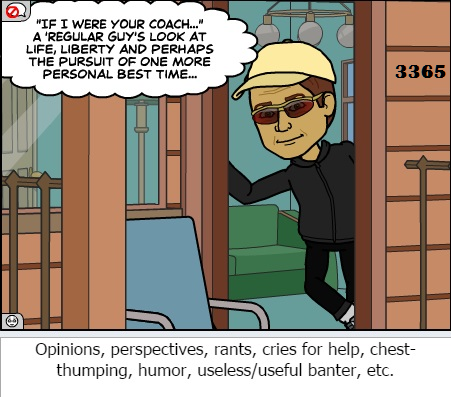But when it comes down to the giving back we give the eye to the other guy
Oh, it seems that so much trouble is simply caused by the angry word
Although silence can be a virtue I say it's a good noise that's preferred
Now you've got every right and reason to be down in the dumps today
Aren't you just adding to the problem if you've got nothing good to say?
Sure there are wars, disease, injustice, rich men walking on your hands
But tell me how can you ever take a breath of hope talking down your fellow man?
("Good Noise," John Gorka, 1994)

A friend I was stationed with in Germany back in the 1980s, one of my karate instructors, used to eat kimchi. Kimchi, for those of you who have not encountered the Orient, is Korean pickled cabbage and other vegetables. The closest thing I can compare it with is a cross between sauerkraut, wasabi and perhaps horseradish. You could tell when Joe had recently eaten kimchi, especially on warm summer days. Joe didn't have to sweat all that much for you to tell the last time he had eaten a jar. There was no denial on his part, either; Joe would make no bones about the amount of high-octane Korean kraut he took in. It seemed to do him well at karate tournaments (fortunately for him there was no rule against eating rotten veggies); but it limited his odds of dates, too.
We all have heard the chestnut: "You Are What You Eat." I've joked in the past that if I were to limit my dietary intake to the Little Debbie snack cakes I rarely eat now, I'd look like a Little Debbie cake; round, filled with junk, probably wrapped in plastic and stuffed in some box. But I had a bit of an object lesson the other day about the social, mental and emotional dietary requirements (both intake and output) of an athlete/coach/race director/organization guy.

It's not so simple as taking a precautionary sniff in order to tell the physical, emotional and spiritual diet of a person. I have met people who gave me a serious case of the heebie-jeebies before I ever really tried to know more about them...sometimes things just don't seem right with the guy/gal. And we all have dealt with people who made us feel uncomfortable or dirty or wary with the first words spoken; what can you do but suck it up and get through the conversation, then run for the Brillo pad and bleach or hope like mad the person proves you wrong in the future.
But there's only so much you can take of a dose of negativity from someone around you until you want to avoid them, because they're a Doug/Debbie Downer.
 I had an all-you-can-eat-negativity-salad-bar moment earlier this week. While the person with whom I was chatting had some good points and perhaps a justifiable beef I knew it was in my best interests to not over-agree with them. To borrow from a former Mossad agent, Victor Ostrovsky (his book: "By Way Of Deception"): 'when I am sitting in conversation with my friend, I know that I am not sitting in a conversation with his.' To wit: While I might withhold the sources of my conversations within these spaces in the interest of protecting their identity, I know if I were to talk smack about someone...even within these spaces...even if it were truth, I'd be the recipient of an unmitigated scheissesturm.
I had an all-you-can-eat-negativity-salad-bar moment earlier this week. While the person with whom I was chatting had some good points and perhaps a justifiable beef I knew it was in my best interests to not over-agree with them. To borrow from a former Mossad agent, Victor Ostrovsky (his book: "By Way Of Deception"): 'when I am sitting in conversation with my friend, I know that I am not sitting in a conversation with his.' To wit: While I might withhold the sources of my conversations within these spaces in the interest of protecting their identity, I know if I were to talk smack about someone...even within these spaces...even if it were truth, I'd be the recipient of an unmitigated scheissesturm.But, the conversation made me think about how I am when I'm in a critical mood. If I had been smart I would have backed the pace off to a much slower one than I was going, or taken a cut-off for a shorter course to get out of the conversation. I mentioned to my wife (and another friend over a beer) that evening: 'my God in heaven, is THAT what people have to put up with when they talk with me!?'
 So, now it's time for me to watch the emotional and spiritual food I dole out to my friends, athletes, cohorts, and members of the running/multisport community. I would much rather be a source of encouragement and nourishment than one whose negative funk can be smelled yards away.
So, now it's time for me to watch the emotional and spiritual food I dole out to my friends, athletes, cohorts, and members of the running/multisport community. I would much rather be a source of encouragement and nourishment than one whose negative funk can be smelled yards away.Tell me the truth - what are you living for? Tell me why, why are you near?
'Cause if you cannot make yourself a good noise then tell me what you're doing here?



















